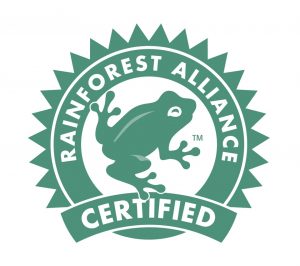By Chloe Sandifer-Stech
If you know me, I have always fiercely defended my caffeine addiction. In fact, one of my first concerns living in the Greenbelt was how I was going to get my daily cup of joe now that I was further from the dining hall (flash forward I purchased my very own Keurig, which now my current prize possession). I always said that as long as my caffeine addiction was not hurting me or others, I didn’t see a real problem with it.
However, ever since my Lifestyle Project this semester I’ve been thinking more about the long-term effects of my actions. One of the category’s I chose was to be vegan several days out of the week. I already eat mostly plant-based, but I wanted to challenge myself further to cut out all animal products completely. Changing my eating habits made me think critically about the environmental imprint of my food: Where was it sourced? How much water was used to make this? Were farmers and workers paid fairly? I started to examine my food choices outside of just animal products, which fed my curiosity about the sustainability of coffee.
One lesser-known sustainability concern about coffee is the method it is grown. Beginning in the 1970s, the rising global demand shifted coffee cultivation from traditional shade-grown farms to farms exposed to direct sunlight in order to increase yield and profit. Sun-grown coffee transforms the plantations into monocrop cultures, a practice which significantly weakens the productivity and health of the soil. In response, farmers are required to use additional chemical fertilizers and protect from pests and diseases that are more prevalent from lack of tree cover. Deforestation and fertilizers disrupt the biodiversity and nutrient cycles of the natural ecosystems, and thus farmers often have to clear large areas of forest to keep up with this farming practice. Specifically in Central America, around 2.5 million acres of forest have been lost to sun cultivation due to the $100 billion dollar annual coffee industry.


One of the easiest ways to ensure you are buying sustainably sourced coffee is to look for the Rainforest Alliance certification on packaging. The Rainforest Alliance ensures that coffee farms meet certain social, economic, and environmental criteria. The certification ensures that coffee farms do not pose a significant threat biodiversity, maintain fertile soils and clean waterways, and pay farmers proper wages. So, next time you shop for coffee, look out for the green logo! Some well-known coffee brands that are rainforest alliance certified include Caribou Coffee, Counter Culture Coffee, and Dunkin Donuts. Personal actions also go a long way in reducing the environmental impact of your morning joe. Buying reusable k-cups as well as composting your coffee groups helps to reduce waste and recycle nutrients back into the soil. Coffee addictions are okay, but make it sustainable!
Sources
- Find Certified Products: https://www.rainforest-alliance.org/find-certified?location=330&category=130&product=144&keyword=&page=2
- How Green is Your Coffee? https://www.theguardian.com/environment/2011/oct/04/green-coffee
- Sun-grown vs. Shade Grown: How it Impacts the Environment and the Farmers: https://www.dlgcoffee.org/news/2017/4/6/coffee-cultivation-sun-grown-shade-grown-and-how-it-impacts-the-environment-and-the-farmers#:~:text=Beginning%20in%20the%201970’s%20the,ecosystem%20and%20on%20coffee%20quality
- Coffee and it’s Impact of People, Animals, and the Planet: https://www.onegreenplanet.org/animalsandnature/coffee-and-its-impact-on-people-animals-and-the-planet/